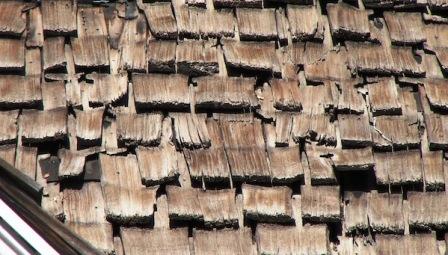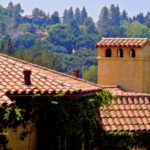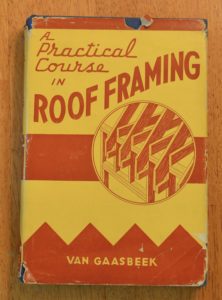Caring for Cedar Shingle and Shake Roofing
Wood roofing is naturally organic and stunningly beautiful in appearance. Most wood shingle and shake roofs are made from western red cedar because of its exceptional properties, including reasonable cost, availability, straight grain, stability, relative light weight (low density), impenetrability to water, and decay resistance. Attributes like this have made it highly sought after by architects and homeowners for many years. See also
This resistance to decay is derived from natural oils and substances found within the structure of the wood. Other wood species, like redwood and cypress, have similar properties and are sometimes used; but decreasing supplies and higher costs, make them scarce these days.
Decay resistant or not, because cedar is an organic material, it requires some attention and care to counteract natural decay. A well-maintained cedar shingle or shake roof should last 35-50 years. The actual life is affected by local environmental conditions like humidity and wind, salt and sun exposure but the factor that most shortens the life of cedar roofs is inattention.

For a long life these roofs must breath. Any dirt, debris or leaves that accumulates on the surface or packs into the spaces between the shingles must be removed. Heavy tree branches can cause damage to wood roofs and restrict good airflow. Pruning will help, while reducing the debris and discouraging the growth of moss, another surefire killer of wood roofing. Any moss and fungus must be removed. Installation of a copper wire along the ridge and every 10’ across the surface of the roof will help control moss if your home is prone to it.
I have heard people say not to walk on a wood roof for fear of damage. That is BS. Frankly, it sounds like a good excuse to not get up there and clean it. Walking on the surface of a wood roof is necessary to clean it and if done properly (step lightly and only on the flat areas not the ends) will have little to no effect. Close inspection from the roof level means that a shingle found missing or split, can be quickly and easily repaired.
As much as we try, even perfectly maintained wood roofs will eventually wear out. The wear comes from exposure to the sun (which dries and cooks the outer surface). Rain (which washes away the sun damaged areas) and wind (which blows particles against the roof). These elements work to slowly erode the material till there is little left but paper-thin strips. Shingles and shakes erode with the softer material between the growth rings going first. A 50-year old wood roof will have shingles that have almost completely eroded away except these hard ring strips.
Wood roofs are stunning to look at when new, but you can forget about trying to keep them looking like that. Cedar will darken no matter what you do. The change in color is rather rapid, occurring within the first year of exposure (under more severe conditions, within several months). Gradually, the silver gray will change to a darker, more graphite gray, then to a brown/black color indicating the colonization of the surface by micro fungi that complete the initial phase of the weathering process.
Wood rapidly attracts water to its surface. When this happens, the wood swells. As it dries and the moisture content decreases, it shrinks. This repeated wet to dry cycling causes the development of compression and tension stresses; these, in turn, cause microscopic cracks to develop.
Over time, these cracks grow larger and larger, caused by additional wettings or by freezing and thawing. The cracks also trap water and allow wood-rotting organisms to penetrate deeper into the wood.
As the water penetrates deeper, the wood becomes slower to dry after rains. With increased moisture, the wood-rotting organisms prolong their destructive activity and damage more wood material than would occur during normal weathering.
As the roof continues to age, the surface and any sharp edges from manufacturing are eroded by abrasive particles carried by wind and water and by the action of sunlight. Birds and insects also continue to slowly degrade the surface and the thicker butt edge.
Fire is an enemy of wood roofs so they are certainly not appropriate for areas that are in potential wildfire danger. All wood roofing materials can be had in fire retardant varieties. Do not apply any coating that claims to be a fire retardant. Shingles that are certified as fire-retardant will be permanently impregnated and protected from fire.
There are any number of products that claim to prolong the life of a cedar roof, and there is little agreement about their effectiveness. Even the Cedar Shingle & Shake Bureau doesn’t recommend anything. They simply suggest that if you’re going to put them on, you should at least enlist the services of a reputable contractor with a solid record locally. According to the bureau, any suitable products will be formulated specifically for wood roofs, and contain a UV inhibitor, a water repellent, and/or an EPA-registered wood preservative. Most shakes have an impregnated fire retardant, so any preservative must be compatible with it. Also, any kind of “sealer” will certainly cause damage to the cedar material since it needs to breathe?
Pressure washers are not recommended because cedar is a soft, low-density wood. Misuse of high-pressure systems can detach shingles or erode many years of wear in moments, even though the roof may look like new. Pressure washing can also drive water deep beneath the shingles and into the attic and structure below.
If you are lucky enough to own a wood roof, congratulations! Now pay it back by taking good care of it.










